Are you ready to break free from the endless cycle of consumer dependency and create a more self-sufficient lifestyle?
Homesteading for beginners is more than just a trend—it’s a transformative approach to living. It empowers you to take control of your resources. With only 10% of American households currently engaged in homesteading practices, you have the opportunity to join an innovative community dedicated to sustainable living.
Imagine reducing your grocery bills by up to 47%, growing pesticide-free vegetables, and creating a lifestyle that connects you directly to the food you consume. Sustainable living isn’t just about growing vegetables—it’s about reimagining your relationship with resources, environment, and community.
Whether you have a small urban space or dream of a larger property, homesteading for beginners offers flexible paths to self-sufficiency. Urban homesteaders prove that even a quarter-acre can become a productive ecosystem of fresh produce and personal empowerment.
This guide will walk you through the essential steps to start your homesteading journey. We’ll break down complex concepts into actionable strategies that fit your unique lifestyle and living situation.
Table of Contents
Understanding Modern Homesteading
Homesteading has changed a lot from its old days. Now, it’s a lifestyle that lets people live sustainably. It’s not just about farming anymore. Today, it’s about being self-sufficient in cities and suburbs too.
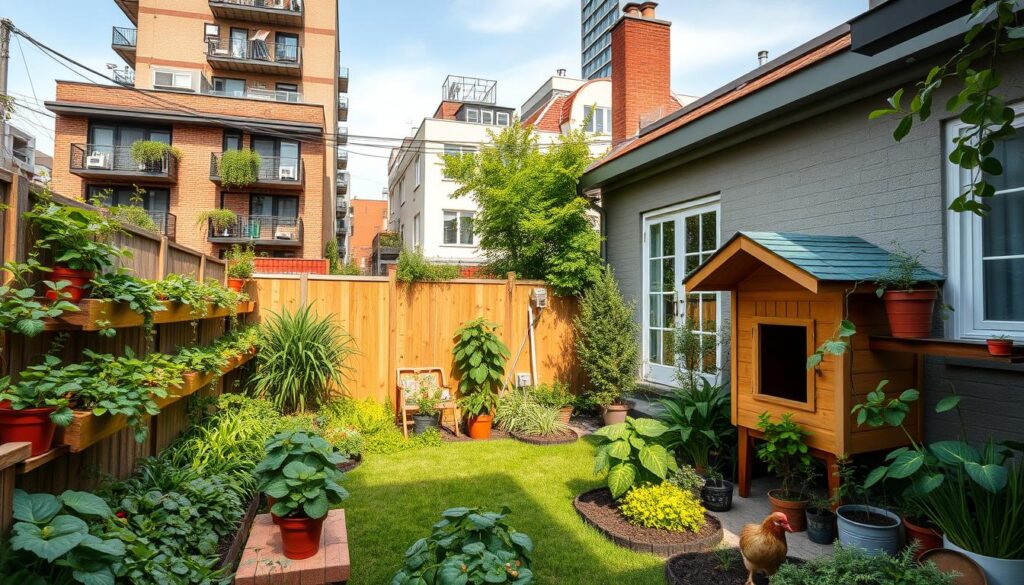
The modern homesteading movement is a big change. It’s about living sustainably and being independent. Urban homesteading is especially popular in cities. It helps people live self-sufficiently even in the city.
Defining Self-Sufficiency
Being self-sufficient is more than just growing your own food. It’s a way of life that reduces your need for outside help. It’s about being strong on your own. Key parts include:
- Growing your own food
- Using less from outside
- Learning skills for living alone
- Managing resources well
The Rise of Sustainable Living
More and more city folks are getting into homesteading. About 30% of urban people are now gardening on balconies or indoors. The pandemic made more people want to live differently, away from just working.
“Homesteading is not about perfection, but about progress towards a more intentional way of living.” – Anonymous Homesteader
Types of Homesteading Approaches
There are many ways to homestead, fitting different lifestyles. Some common ones are:
- Container gardening for small spaces
- Joining community gardens
- Keeping animals in your backyard
- Growing herbs indoors
No matter if you have a tiny apartment or lots of land, you can live sustainably. Start small, keep learning, and grow your skills over time.
The History and Evolution of Homesteading
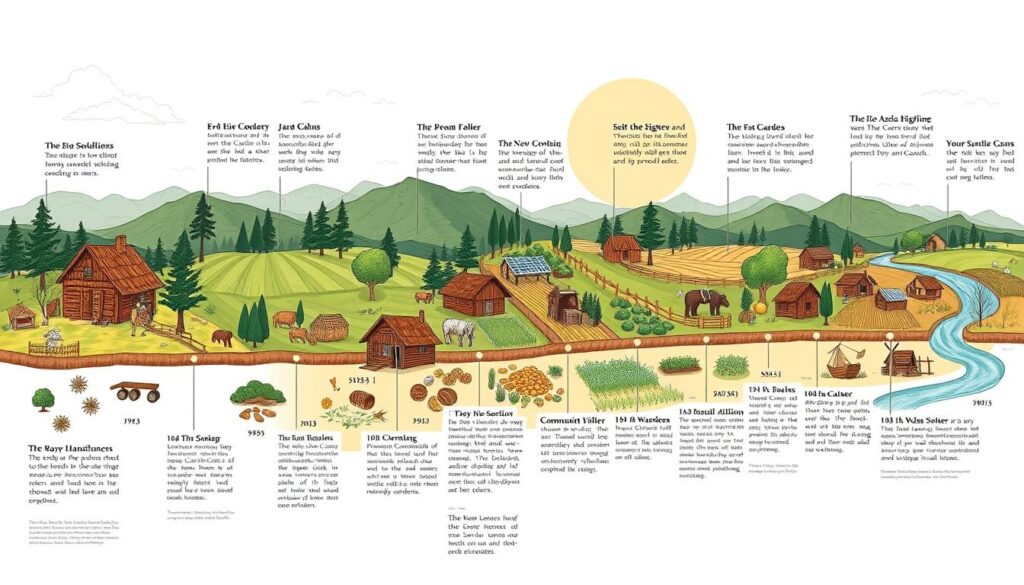
Homesteading for beginners starts with understanding its rich history. The journey of homesteading in America began with the Homestead Act of 1862. This act changed the nation’s landscape and how people saw land.
This groundbreaking legislation offered 160 acres of public land for just $1.25 per acre. It sparked a massive migration and settlement wave.
“The land was more than property; it was a promise of independence and self-sufficiency.”
By 1934, an amazing 270 million acres had been transferred to private ownership. This reshaped the American frontier. The evolution of off-grid living came from early settlers’ survival strategies.
- 1862: Homestead Act establishes land distribution policy
- 1900: Nearly 250,000 black farmers owned 15 million acres
- 1930s-1940s: Back-to-the-land movement gains momentum
The mid-20th century saw big changes in homesteading. The post-World War II era and the 1960s and 1970s counterculture movement brought back interest in self-sufficient living. Urban dwellers began seeking alternative lifestyles, inspired by authors like Frank Borsodi and Betty MacDonald.
| Era | Key Developments | Significance |
|---|---|---|
| 1862-1934 | Homestead Act Implementation | 1.6 million homesteads established |
| 1960s-1970s | Counterculture Movement | Renewed interest in rural living |
| 21st Century | Urban Homesteading | Technology-enhanced self-sufficiency |
Today’s homesteading for beginners is very different from its roots. Modern homesteaders mix old skills with new technologies. They create new ways to live sustainably. From urban chicken keeping to indoor microgreen cultivation, the spirit of self-reliance keeps evolving.
Essential Skills for Homesteading for Beginners
Starting a homesteading journey needs dedication and a desire to learn. You might begin with a small garden or dream of a bigger farm. Learning the basics is key to success.
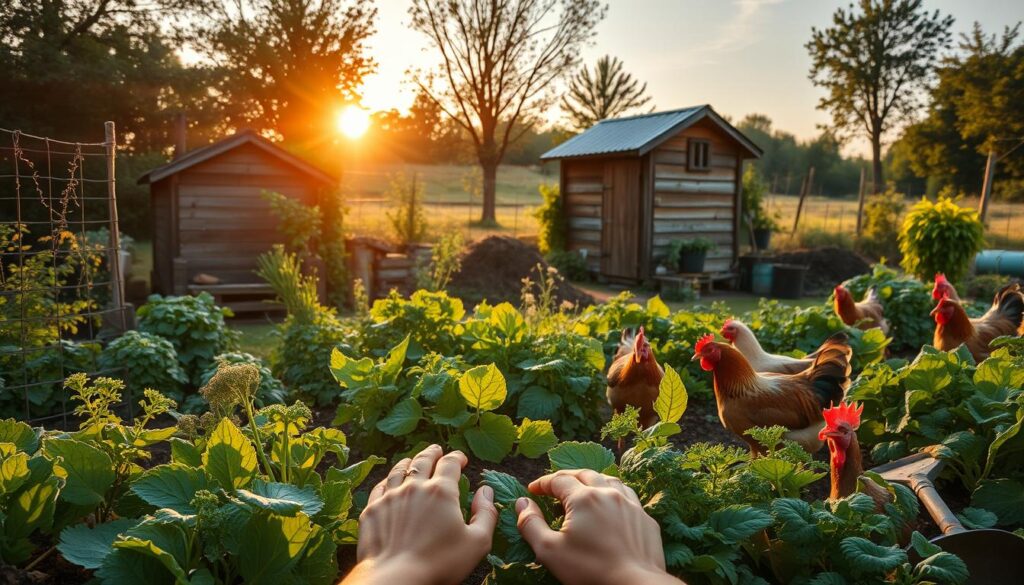
Learning the main skills of homesteading changes how you see self-sufficiency. Here are the essential skills for any new homesteader:
Mastering Backyard Gardening Fundamentals
Backyard gardening is the heart of homesteading. You start by learning:
- Soil preparation and testing
- Crop selection for your climate
- Organic pest control methods
- Seasonal planting strategies
Food Preservation Techniques
Turning your harvest into lasting food is vital. Learn these preservation methods:
- Water bath canning
- Pressure canning
- Dehydrating fruits and vegetables
- Fermentation techniques
Animal Husbandry Basics
Raising animals on your homestead needs planning and knowledge. Think about these important points:
| Animal Type | Space Required | Care Complexity |
|---|---|---|
| Chickens | Small backyard | Low |
| Goats | 1-2 acres | Medium |
| Beef Cattle | 5-10 acres | High |
“Learning never exhausts the mind.” – Leonardo da Vinci
Remember, homesteading is a journey of continuous learning. Start small, be patient, and grow your skills and confidence over time.
Choosing Your Homestead Location
Urban homesteading has changed how we think about living off the land. You don’t need a lot of land to start. Creativity and planning can turn any space into a productive homestead.
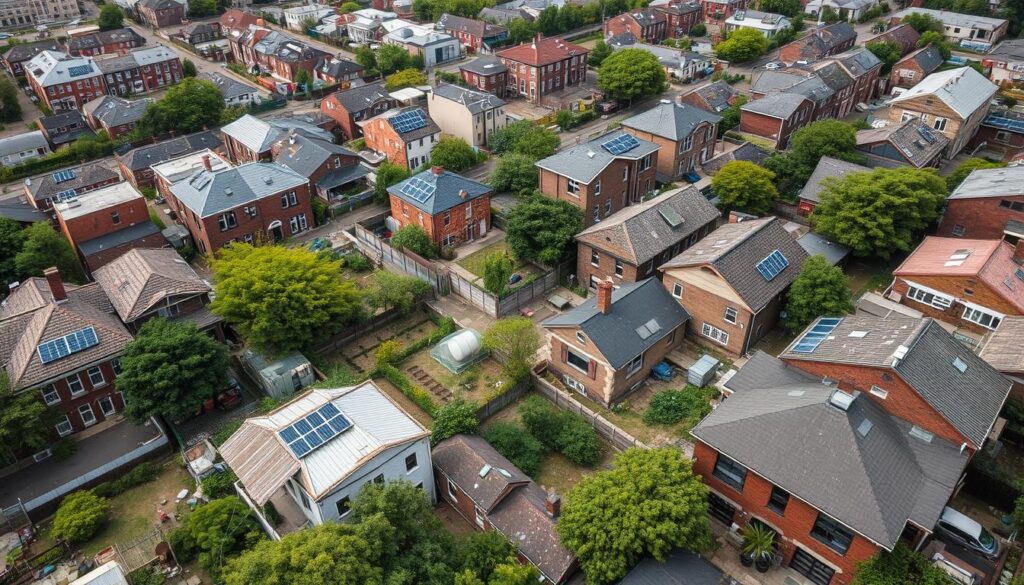
- Zoning rules in your area
- Space for gardens and animals
- The local weather and growing conditions
- Access to water and off-grid living options
Your homesteading chances change a lot based on where you are. Here are some state-specific tips:
| State | Homesteading Advantages | Key Considerations |
|---|---|---|
| Michigan | Fertile soil for crops | Ideal for diversified farming |
| Tennessee | 9-month harvesting season | Property protection up to $5,000 |
| Idaho | Property creditor protection | Up to $100,000 protection |
| Alaska | Remote homesteading options | Accessible only by plane in some areas |
“The best homestead is the one you can make work for your unique situation.” – Homesteading Wisdom
Urban homesteading lets you live sustainably, even in small spaces. Off-grid living isn’t just for the countryside. City folks can use solar panels, grow vertical gardens, and cut down on utility bills.
Pro tip: Begin small and grow slowly. Successful homesteaders usually start with 1-2 big projects in their first year. About 78% say having a detailed plan is key.
Planning Your Homestead Layout
Creating a good homestead layout is key for beginners. It doesn’t matter if you’re in the city or the countryside. Planning well helps you use your space better and work more efficiently.
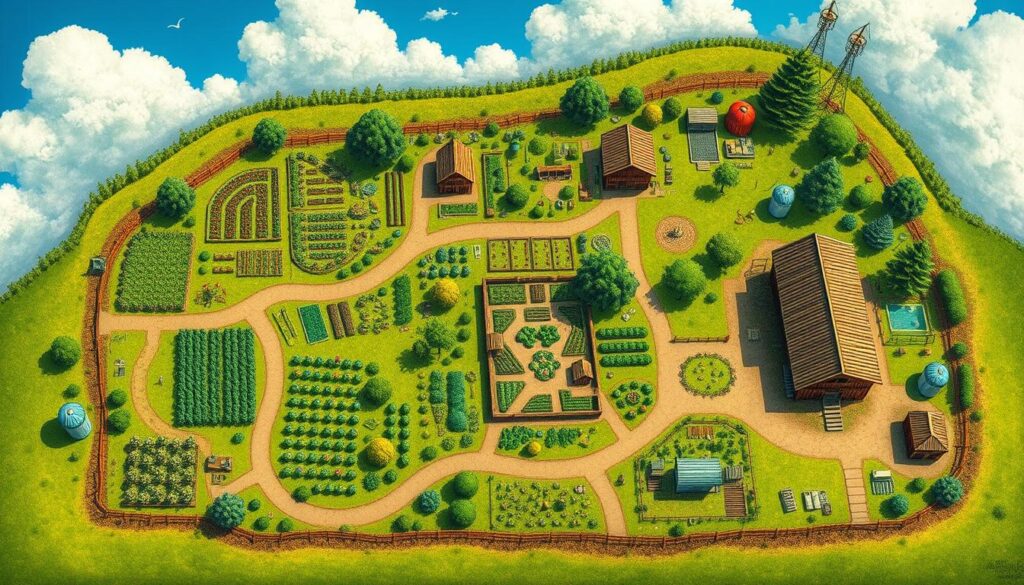
When planning your homestead, think about many things. You want it to be sustainable and work well.
Space Optimization Strategies
Urban homesteading means using your space smartly. Here are some tips:
- Try vertical gardening
- Make areas that do more than one thing
- Use containers to garden in small spots
- Create small, but effective work areas
Infrastructure Requirements
| Infrastructure Element | Essential Considerations |
|---|---|
| Water Sources | Rainwater collection, well access, municipal connection |
| Power Systems | Solar panels, wind turbines, grid connection |
| Storage Solutions | Root cellar, greenhouse, dedicated storage areas |
Zoning Considerations
Knowing local rules is vital for homesteading. Look into:
- Laws about keeping animals
- Rules on building
- Agricultural zoning
- Permits for energy changes
“A well-planned homestead is the foundation of sustainable living.” – Homesteading Wisdom
Urban and rural homesteading both need careful planning. Your layout should grow with your skills and the place you’re in.
Starting a Sustainable Garden
Backyard gardening turns your outdoor area into a lively spot for fresh food and green living. It doesn’t matter if you have a tiny urban spot or a big rural area. Creating a permaculture garden changes how you grow food.
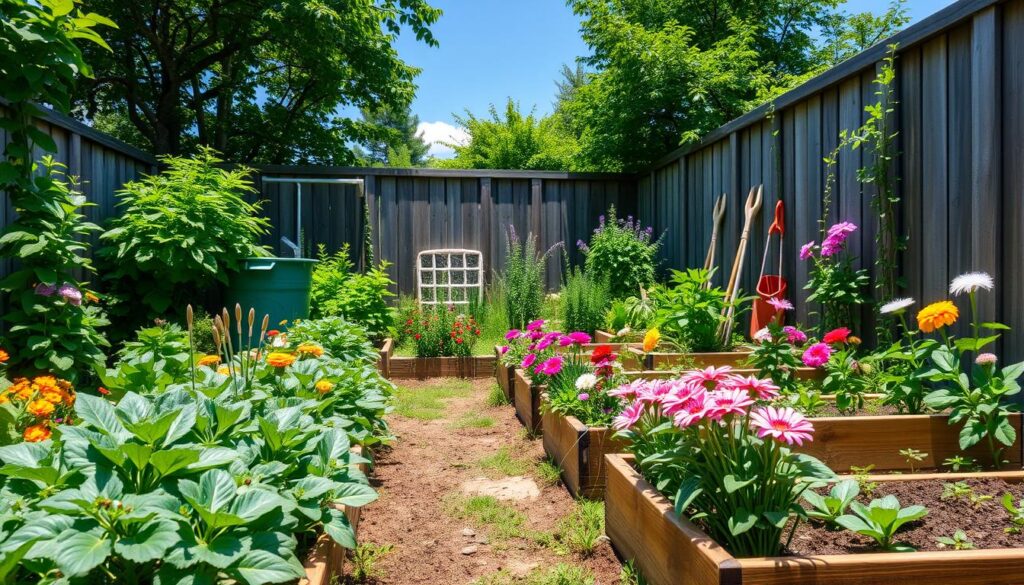
To start a sustainable garden, you need a good plan and to know your local area. City gardeners can grow a lot in small spaces with smart ideas.
“Gardens are not made by sitting in the shade” – Rudyard Kipling
Essential Sustainable Gardening Strategies
- Implement vertical gardening techniques
- Practice no-till soil management
- Use companion planting methods
- Develop natural pest control systems
Space-Saving Garden Design
| Technique | Potential Yield Increase |
|---|---|
| Vertical Gardening | 10x per square foot |
| Square Foot Gardening | Up to 50% more crops |
| Container Gardening | Adaptable to any space |
Permaculture teaches us to work with nature, not against it. By knowing your local ecosystem, you can make a garden that needs little help but gives lots of food.
Key Considerations for Success
- Assess your soil quality
- Choose native and adaptive plant species
- Develop a comprehensive composting system
- Implement water-efficient irrigation
With hard work and smart planning, your backyard gardening can change how you see food. It leads to a greener, more self-sufficient life.
Raising Livestock on Your Homestead
Raising animals on your homestead is key to being self-sufficient. It turns your land into a place that gives you food, fertilizer, and more. This makes your property sustainable.
Choosing the right animals is important. You need to think about your land, goals, and what you have. Start with chickens if you’re new. They are easy to care for and give many benefits.
Selecting Appropriate Animals
When picking animals, remember these things:
- How much land you have
- The local weather
- How much food you need
- How much time you can spend on animal care
Housing and Care Requirements
Good housing is essential for healthy animals. Each animal needs its own kind of shelter:
- Chickens need safe coops with bars to roost
- Goats need strong fences and shelters
- Pigs need places to wallow in mud and solid pens
Feed and Healthcare Management
Good care means the right food and health checks:
- Feed them at the same times every day
- Keep their water clean
- Take them to the vet regularly
- Learn how to care for them yourself
“Raising livestock isn’t just about food production—it’s about creating a sustainable ecosystem on your homestead.” – Sustainable Farming Experts
By adding animals to your homestead, you boost your self-sufficiency. You also make your farm more strong and able to last.
Alternative Energy Sources
Looking into alternative energy is key for off-grid living. Your home can turn into a green power center. This cuts down on carbon emissions and lowers bills.
Solar energy is a top choice. It costs between $10,000 to $30,000 upfront. But, it’s a smart long-term investment in clean energy.
- It lowers your monthly bills
- It needs little upkeep
- It provides steady power
- It’s good for the planet
“Renewable energy is not just about power – it’s about creating a sustainable future for your homestead.”
Wind energy is another great option. It costs between $5,000 and $20,000 to set up. Places like California, Colorado, and Montana help with renewable energy rules.
| Energy Source | Initial Cost | Annual Savings Potential |
|---|---|---|
| Solar Panels | $10,000 – $30,000 | Up to 70% on electricity |
| Wind Turbines | $5,000 – $20,000 | Up to 60% on electricity |
Choosing alternative energy cuts down on grid reliance. The right tech depends on your home’s location and needs.
Get advice from local green energy pros. They can help you create a tailored solution. Your green efforts can make your home a clean, efficient haven.
Water Management and Conservation
Water is essential for any sustainable living and off-grid homestead. Proper management of this resource can make a big difference. It can turn a property into a thriving one or a struggling one.
For those committed to sustainable living, managing water is a key skill. It ensures self-sufficiency and takes care of the environment.
Rainwater Collection Systems
Rainwater harvesting is a great way to save water. By using the right collection methods, you can use nature’s free water.
- Install rain barrels at downspout locations
- Design roof-based collection systems
- Calculate potential water capture based on roof square footage
“A single inch of rain on a 1,000 square foot roof can collect approximately 1,300 gallons of water” – Water Conservation Experts
Irrigation Methods
Using water wisely is crucial for your off-grid garden. Drip irrigation is a top choice for saving water.
| Irrigation Method | Water Savings | Efficiency Rating |
|---|---|---|
| Drip Irrigation | 30-70% | High |
| Traditional Sprinklers | 10-20% | Low |
| Mulch-Based Irrigation | 50% | Medium-High |
Water Storage Solutions
Having a good water storage system is important. It helps during dry times. Look into different storage options to improve your water management.
- Cisterns for large-volume storage
- Underground tanks for temperature regulation
- Above-ground containers for easy access
By using these water management techniques, you’ll have a strong system. It will support your sustainable living goals and lessen your need for outside water.
Food Storage and Preservation Methods
Learning how to store and preserve food is key for homesteaders. It helps cut down on grocery bills and keeps food available all year. This skill is vital for those starting out in homesteading.
There are many ways to keep food fresh and extend its shelf life. Knowing these methods is essential for a strong food storage plan.
- Canning: Preserve high-acid foods like fruits and pickles
- Dehydrating: Remove moisture to extend food longevity
- Fermenting: Create probiotic-rich preserved foods
- Root cellaring: Store vegetables in cool, dark environments
Strategic food preservation can help you save money and reduce waste while supporting your journey toward self-sufficiency.
Preserving your own food connects you directly to your nutrition and reduces dependency on external food sources.
| Preservation Method | Typical Shelf Life | Best Foods |
|---|---|---|
| Dehydrating | 6-12 months | Fruits, herbs, vegetables |
| Canning | 1-2 years | Pickles, jams, tomatoes |
| Fermenting | 4-12 months | Vegetables, dairy products |
| Root Cellaring | 3-6 months | Potatoes, apples, squash |
Start with simple methods like water bath canning for high-acid foods. As you get better, try more complex methods like pressure canning and freeze-drying. Keep food in cool, dry places with tight containers to keep it fresh.
Getting basic tools like dehydrators, canning gear, and storage containers is a good investment. With time and practice, you’ll master food preservation. This will boost your self-sufficiency.
Building Self-Reliance Through Skills Development
Learning homestead skills is your way to true self-sufficiency. Every skill you learn helps you live independently and confidently. Skills like crafting and mechanical repairs build a strong base for sustainable living.
“The most valuable asset on any homestead is not land, but knowledge.” – Experienced Homesteader
Starting your journey to self-sufficiency means mastering many skills. These skills go beyond just farming. Let’s look at some important areas:
- Carpentry and basic home repairs
- Textile crafts like knitting and sewing
- Mechanical skills for equipment maintenance
- Food preservation techniques
- Natural medicine and herbal remedies
There are many ways to learn new skills. Here are some effective methods:
| Learning Method | Skill Acquisition Potential |
|---|---|
| Online Courses | High flexibility, wide range of topics |
| Local Workshops | Hands-on learning, direct interaction |
| Community Classes | Networking, practical skills |
Remember, learning homestead skills is ongoing. Start small, stay curious, and grab every learning chance. Your dedication to learning will boost your self-sufficiency and resilience.
Financial Aspects of Homesteading
Starting a homestead requires smart financial planning. It can turn a costly journey into a profitable one. Understanding the financial side is key.
Initial Investment Considerations
Starting a homestead means making smart financial choices. Your costs will depend on your approach to sustainable living. Here are some key areas to consider:
- Land acquisition (average rural land costs around $4,500 per acre)
- Essential tools and equipment
- Infrastructure development
- Seed stock and initial livestock
“A healthy business needs to produce more than it consumes to maintain viability.”
Ongoing Costs Management
Keeping costs down is vital for long-term success. For example, raising chickens might cost about $3.50 per dozen eggs. You’ll need to set prices right to make a profit.
Income Generation Opportunities
Your homestead can also earn extra money in different ways:
- Selling surplus produce
- Dairy product sales (butter, yogurt)
- Craft and artisan goods
- Community market participation
Pro tip: Most small homestead businesses can start with what you already have. Experts suggest saving three years of living expenses before going full-time.
Successful homesteading mixes passion with smart money management. With careful planning, your journey into sustainable living can be rewarding and profitable.
Conclusion
Your journey to sustainable living begins with small steps. Homesteading for beginners is about making progress, not being perfect. With 12% of U.S. households already homesteading, you’re part of a growing movement.
Sustainable living is for everyone, no matter where you live. You can grow food in small spaces with container or vertical gardening. Even small actions like growing herbs or composting can change your daily life.
Homesteading is flexible and doesn’t require a lot of space or experience. Start with simple things like making eco-friendly cleaning products. This can save you up to $500 a year. You can even create a mini garden on your balcony.
Your homesteading journey is special. Learn, join local gardens, and enjoy becoming more self-sufficient. Sustainable living is about getting better and finding happiness in a more connected life.
FAQ
What exactly is modern homesteading?
Modern homesteading is about living sustainably and being self-sufficient. You grow your own food, use alternative energy, and rely less on others. It works in cities, suburbs, or the countryside. You’ll learn to garden, preserve food, and save resources.
Do I need a large property to start homesteading?
No, you don’t need a big property. People grow food in small spaces like containers and balconies. Use your space wisely with vertical gardens and small animals.
How much initial investment is required to start homesteading?
You can start small and spend little money. Begin with herbs in containers or a few chickens. Use recycled stuff, join gardening groups, and learn as you go.
What are the most important skills for a beginner homesteader?
Key skills are gardening, preserving food, composting, animal care, and managing resources. Keep learning through workshops, online courses, and local groups.
Can homesteading help me save money?
Homesteading can cut down on grocery bills and utility costs. You might even make money selling extra food or crafts. The savings can be worth the initial cost over time.
What livestock are best for beginners?
Chickens are great for beginners, offering eggs, meat, and pest control. Rabbits and dwarf goats are also good for small spaces. Always check local laws before getting animals.
How do I manage water resources on a homestead?
Manage water by harvesting rain, using efficient irrigation, and mulching. Consider storing rainwater in barrels or cisterns. This helps save water and be self-sufficient.
What alternative energy sources work best for homesteads?
Solar panels are a top choice for most homesteaders. Wind turbines and micro-hydro systems work in specific areas. Choose based on your location and energy needs.
How can I learn more homesteading skills?
Learn from local offices, workshops, online courses, forums, books, and YouTube. Joining local groups offers hands-on learning and support.
Is homesteading legal everywhere?
Laws vary by place. Cities and suburbs might limit livestock, garden size, and energy systems. Always check local rules and get permits before starting big projects.
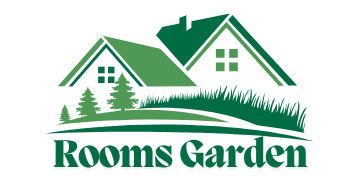
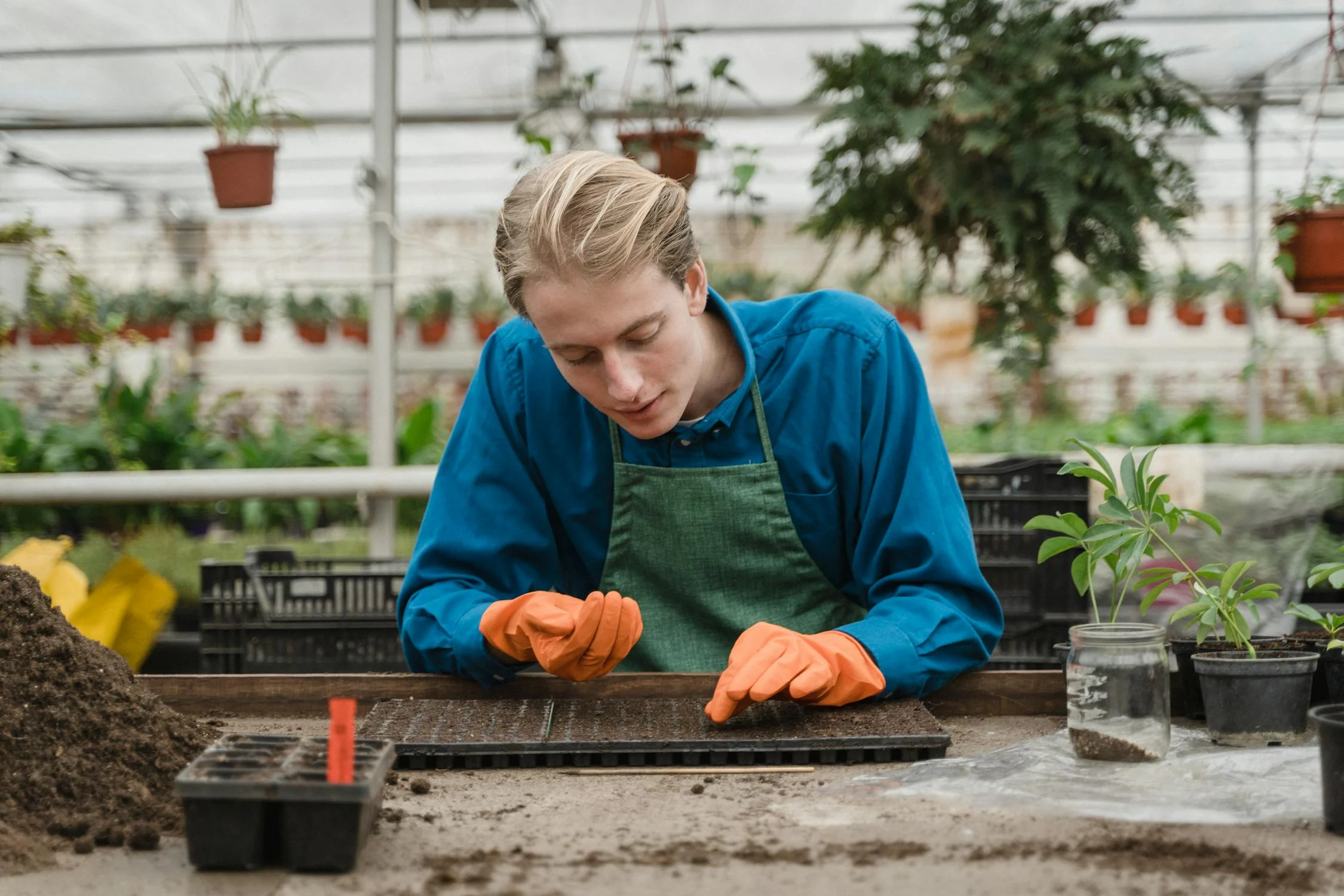
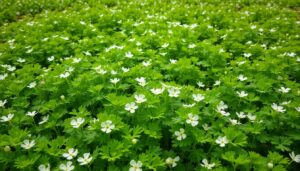
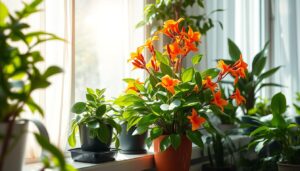

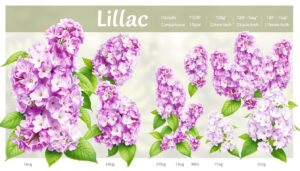

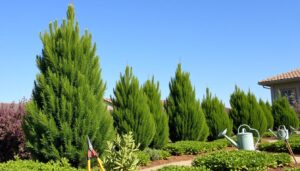
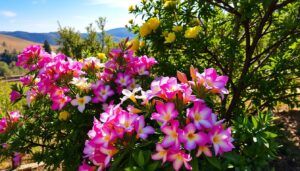
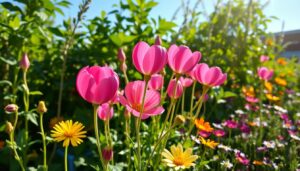

1 thought on “Homesteading for Beginners: Start Your Sustainable Life”